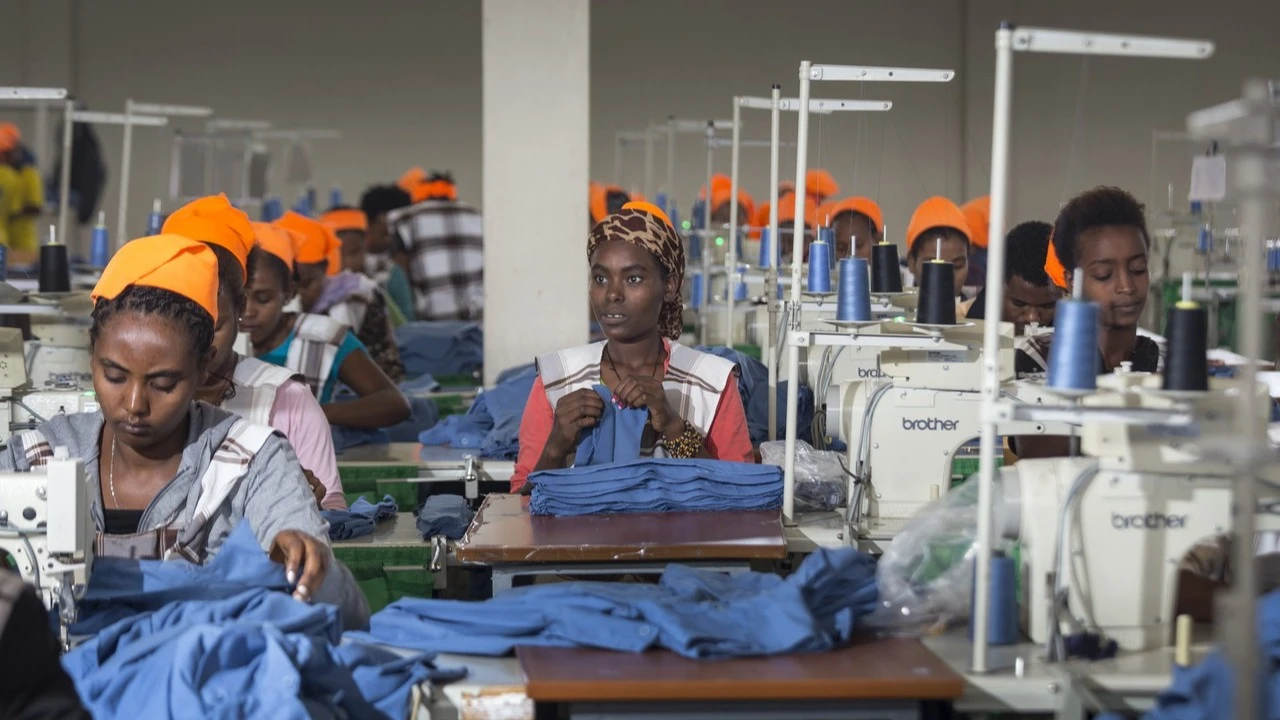
The lack of financing options, particularly for small and medium-sized enterprises (SMEs), stifles innovation and hinders business growth.

Africa is rapidly positioning itself as a key player in the global manufacturing landscape, offering unprecedented opportunities for growth and investment.
With manufacturing contributing over 10.5 percent to the continent’s GDP, Africa is on the cusp of a manufacturing revolution, driven by dynamic economies such as South Africa, Nigeria, and Egypt.
According to recent report, Africa’s manufacturing sector is witnessing robust growth, with top-performing nations like South Africa, which leads the continent, followed by Nigeria and Egypt, making significant strides in industries including automotive, textiles, and consumer goods.
The continent’s increasing focus on industrialization, coupled with favourable policies and emerging trade agreements like the African Continental Free Trade Area (AfCFTA), is creating an ideal environment for businesses seeking to expand their global footprint.
Special Economic Zones (SEZs) across the continent are at the forefront of this transformation.
Notably, Ethiopia’s Hawassa Industrial Park has become a magnet for foreign direct investment, particularly in the textile and apparel industries, while Tanzania has developed number of Special Economic Zones (SEZ), targeting export markets.
Likewise, Morocco and South Africa’s burgeoning automotive sectors, which together produce nearly 1 million vehicles annually, highlight Africa’s growing significance in global supply chains.
According to reports, South Africa is the largest manufacturing hub on the continent, contributing approximately 13 percent of its GDP from the sector.
Nigeria follows, where manufacturing contributes around 8.7 percent of GDP, heavily driven by food, beverages, and tobacco industries.
Egypt is another key player, with manufacturing contributing 16.7 percent to its GDP, driven by textiles, chemicals, and consumer goods.
Investments in renewable energy and green manufacturing are gaining momentum, with countries like South Africa leading initiatives to reduce carbon footprints in manufacturing.
These efforts not only align with global sustainability trends but also make Africa an attractive destination for eco-conscious investors.
Africa’s youthful and rapidly growing population represents a vast workforce and a burgeoning consumer market, making it an ideal location for manufacturing investments.
With foreign direct investment in the sector on the rise, particularly in high-growth areas like automotive, textiles, and food processing, now is the time to seize the opportunity.
Africa’s manufacturing sector is poised for exponential growth, and the world is taking notice.
As the continent embrace’s industrialisation and innovation, it is set to become a global manufacturing powerhouse.
Companies and investors are encouraged to be part of Africa’s industrial renaissance, driving the future of manufacturing on the continent.
These critical issues of manufacturing growth and potential will take center stage at the upcoming Manufacturing Indaba Conference and Exhibition.
This premier event, set to take place from the 22 – 23 October 2024 at the Sandton Convention Centre in Johannesburg, South Africa, will bring together industry leaders, policymakers, and investors to discuss the future of manufacturing in Africa.
However, according to Global Africa Network, several challenges continue to impede the sector’s expansion across the continent including insufficient infrastructure, lack of access to finance, skills gap, trade barriers, political instability and technological innovations.
GAN says limited access to affordable finance restricts manufacturers from investing in modern technology, expanding operations, and enhancing productivity.
The lack of financing options, particularly for small and medium-sized enterprises (SMEs), stifles innovation and hinders business growth.
The manufacturing sector also demands a skilled workforce proficient in modern manufacturing techniques and technologies.
However, a prevalent skills gap across Africa hinders industry growth, as educational systems often fail to provide relevant training and technical skills.
GA notes that Non-tariff barriers, trade restrictions, and complex customs procedures obstruct intra-regional trade and hinder the development of regional value chains. Simplifying trade procedures and reducing tariffs within regional blocs can stimulate manufacturing activities and improve market access.
Political instability, conflicts, and security challenges in certain regions disrupt manufacturing operations, deter foreign investment, and undermine supply chain reliability as they pose a threat to production, infrastructure, and investor confidence.
Cumbersome regulatory processes, bureaucratic inefficiencies, and corruption hinder business operations and deter foreign investment were also being identified as challenge facing the growth manufacturing in Africa.
Addressing these challenges, GAN says Africa requires collaborative efforts from governments, private sector stakeholders, and development partners.
The Current Path forecast is for a steady increase in the size of Africa’s service sector to 58 percent in 2043, with manufacturing increasing to 22 percent and agriculture declining to 6 percent.
___
Source here
